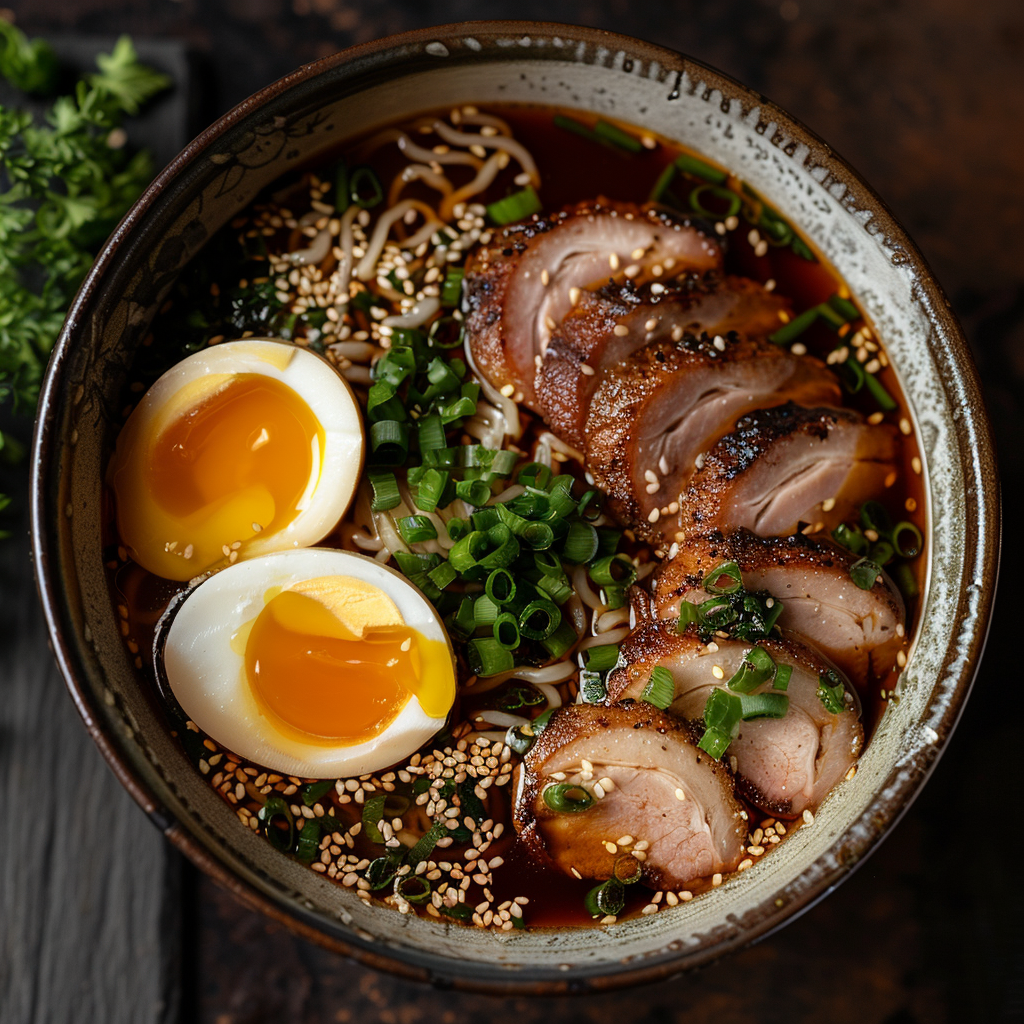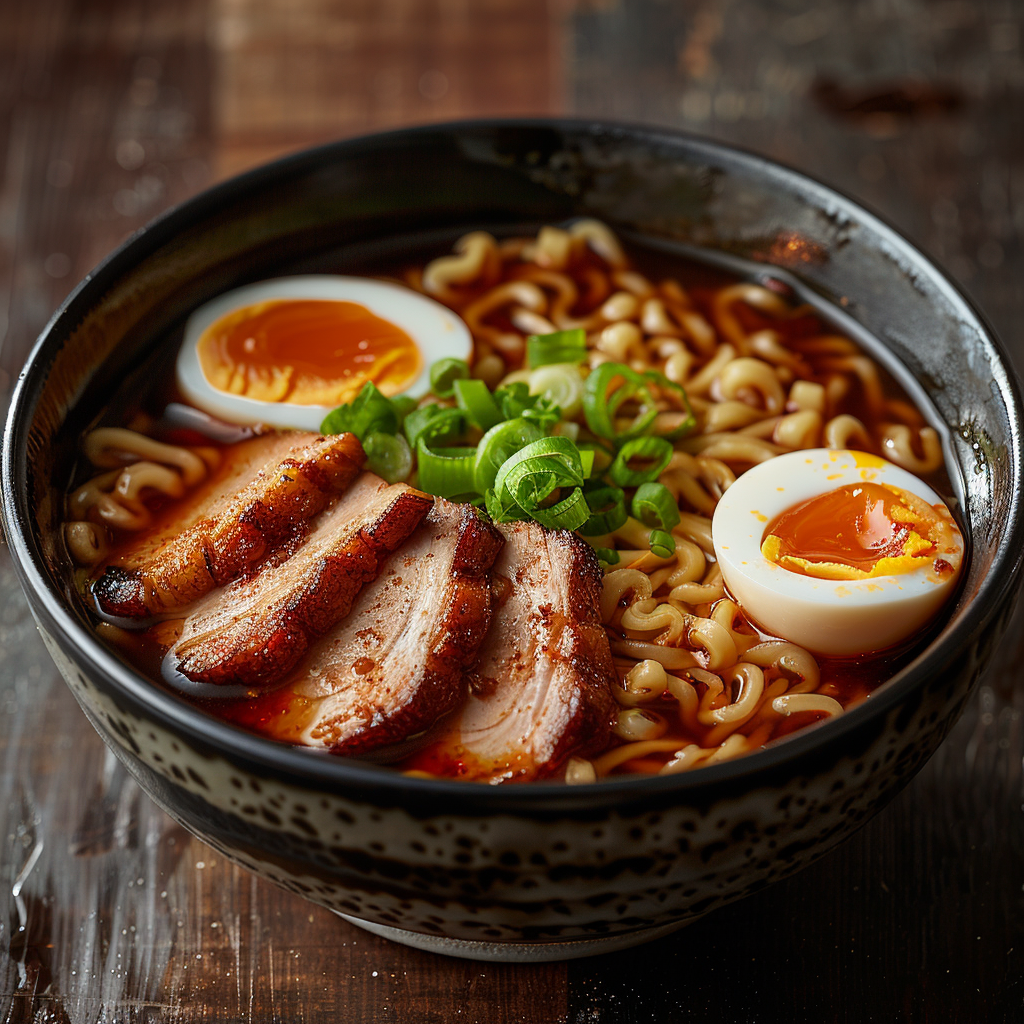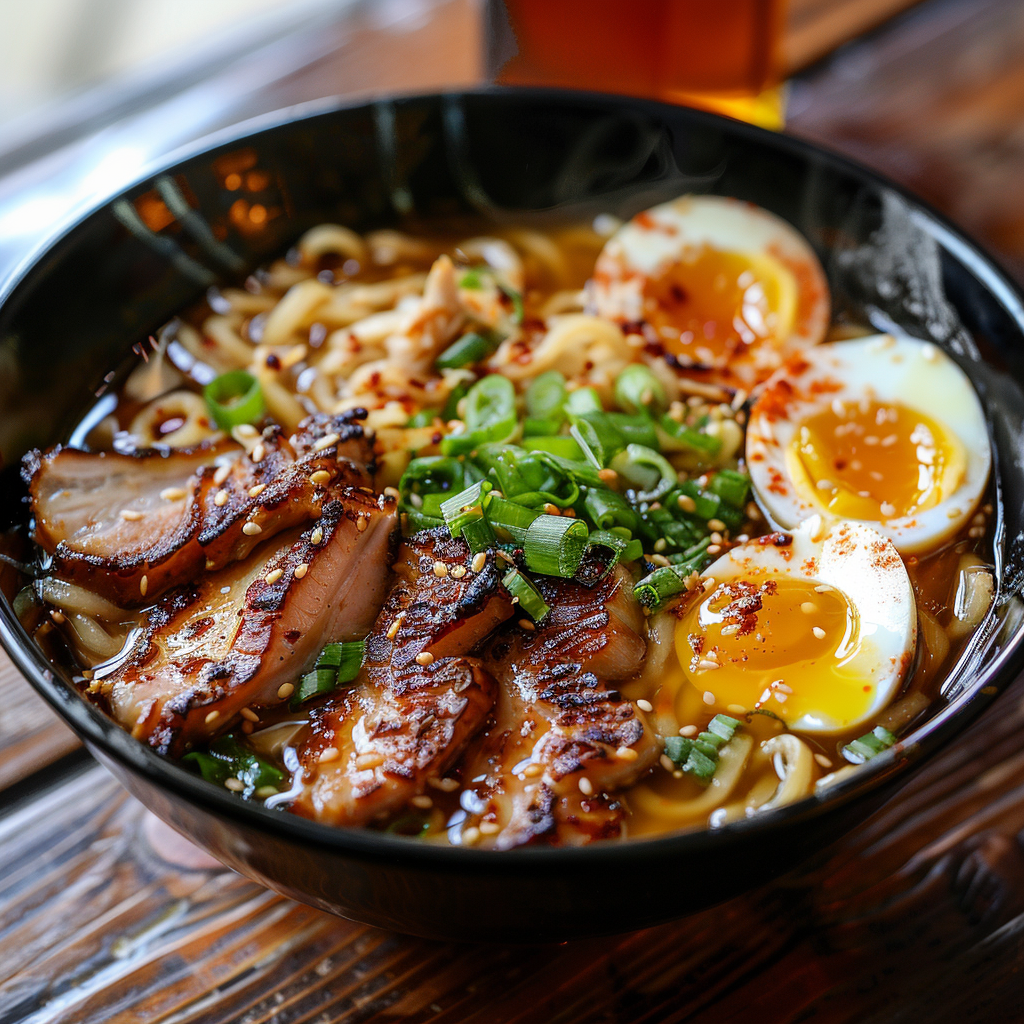Why Fresh Ramen Noodles Are a Game-Changer
Let me tell you about the time I made fresh ramen noodles from scratch. It was one of those lazy Sunday afternoons when my kids were begging for something fun and different. I decided to take a leap and make fresh ramen noodles at home. The result? A bowl of steamy, chewy perfection that had everyone asking for seconds. If you’ve ever wondered what makes fresh ramen noodles so special compared to the instant kind, you’re in for a treat. Not only are they easier to make than you think, but they also bring out flavors that will leave your taste buds dancing.
A Little History About Ramen
Ramen is more than just a trendy dish; it’s a cultural icon. Originating in Japan, this noodle soup has evolved over centuries, blending Chinese noodle-making techniques with Japanese flavors. Traditionally, ramen shops would hand-pull their noodles daily, ensuring each bowl was fresh and flavorful. These days, while you can find packaged versions everywhere, nothing beats the texture and taste of homemade ramen noodles without a pasta maker. Trust me—I’ve tried both, and fresh always wins!
Why You’ll Love This Recipe
If you’re looking for a recipe that’s simple yet impressive, this is it. Fresh ramen noodles have a springy texture and a delicate flavor that store-bought versions just can’t match. Plus, making them yourself means you control exactly what goes into them—no weird additives or preservatives. Whether you’re cooking for family or impressing friends, this dish is sure to be a hit. And don’t worry if you don’t own a pasta maker; we’ll cover how to make these noodles by hand.
Perfect Occasions to Make This Dish
This recipe shines on cozy nights when you want something comforting but not too heavy. It’s also perfect for dinner parties where you want to show off your culinary skills. Imagine serving a steaming bowl of ramen noodles recipe topped with soft-boiled eggs, veggies, and savory broth. Your guests won’t stop raving about it! Even better, it works for casual weeknight dinners when you need something quick yet satisfying.
Ingredients
- 2 cups all-purpose flour
- 1/2 teaspoon salt
- 1 large egg
- 1/2 cup water (adjust as needed)
- 1 tablespoon baking soda (optional, for alkaline flavor)
Substitution Options
- Swap all-purpose flour with bread flour for extra chewiness.
- Use rice flour for a gluten-free option, though the texture will vary slightly.
- If you can’t find baking soda, omit it—your noodles will still taste great.
Step 1: Mixing the Dough
To start, combine the flour and salt in a large mixing bowl. Crack the egg into the center and gradually add water while stirring. The dough should come together into a shaggy mass. Don’t panic if it feels dry at first—just keep adding tiny amounts of water until it holds together. Pro tip: Knead the dough for at least 5 minutes to develop gluten, which gives the noodles their signature bounce.
Step 2: Resting the Dough
Once your dough is smooth and elastic, wrap it tightly in plastic wrap and let it rest for 30 minutes. This resting period allows the gluten to relax, making the dough easier to roll out later. While you wait, imagine how amazing your kitchen will smell once these fresh ramen noodles hit the boiling pot!
Step 3: Rolling and Cutting
After resting, divide the dough into smaller portions. Roll each piece into a thin sheet using a rolling pin (or wine bottle if you’re feeling creative). Dust with flour to prevent sticking. Once rolled, fold the sheets loosely and slice them into thin strips. Chef’s tip: For perfectly even noodles, stack the folded sheets before cutting.
Step 4: Boiling the Noodles
Bring a pot of water to a boil and gently drop in your freshly cut noodles. They’ll cook in just 2-3 minutes, so keep an eye on them. Fresh noodles don’t need long to cook, unlike dried ones. As soon as they float to the surface, they’re ready to be drained and added to your favorite broth.
Timing
- Prep Time: 45 minutes (including resting)
- Cooking Time: 3 minutes
- Total Time: 48 minutes
Chef’s Secret
Add a pinch of baking soda to mimic the alkaline flavor found in traditional sun noodle ramen recipe. It gives the noodles a subtle tang that pairs beautifully with rich broths.
Extra Info
Did you know that real ramen chefs train for years to master the art of noodle-making? Luckily, you don’t need years of practice to enjoy delicious fresh ramen noodles whole foods-style right at home. Just follow this recipe, and you’ll feel like a pro in no time.
Necessary Equipment
- Mixing bowls
- Rolling pin or wine bottle
- Sharp knife
- Pot for boiling
Storage
If you end up with leftover noodles, store them properly to maintain freshness. Place the uncooked noodles in an airtight container dusted with flour to prevent clumping. They’ll last in the fridge for up to 3 days. Cooked noodles are best enjoyed immediately, but if you must save them, toss them with a bit of oil and refrigerate.
For longer storage, freeze the raw noodles in single-layer sheets on a baking tray. Once frozen, transfer them to a freezer-safe bag. They’ll stay good for up to a month. Just remember to thaw before cooking.
Never refreeze cooked noodles, as it compromises texture and flavor. Instead, use leftovers creatively—like tossing them into stir-fries or salads.
Tips and Advice
- Always dust your work surface with flour to avoid sticking.
- Don’t skip the resting step—it’s crucial for easy rolling.
- Taste-test one noodle during cooking to ensure it’s perfectly done.
Presentation Tips
- Serve in deep bowls with colorful toppings like green onions, sesame seeds, and soft-boiled eggs.
- Garnish with nori sheets for an authentic touch.
- Drizzle chili oil or soy sauce for added flair.
Healthier Alternative Recipes
Here are six ways to tweak this recipe for a healthier twist:
- Whole Wheat Noodles: Substitute half the all-purpose flour with whole wheat flour for added fiber.
- Zucchini Ramen: Use zucchini ribbons instead of traditional noodles for a low-carb option.
- Vegan Broth: Pair your noodles with a miso-based broth for a plant-based meal.
- Gluten-Free Option: Try rice flour or chickpea flour for a gluten-free version.
- Protein-Packed Toppings: Add grilled chicken, tofu, or boiled eggs for extra protein.
- Vegetable Medley: Load up your bowl with spinach, mushrooms, and carrots for added nutrients.
Mistake 1: Overworking the Dough
Overworking the dough can lead to tough noodles. To avoid this, knead only until the dough becomes smooth and elastic. Remember, less is more here. Practical tip: Let the dough rest adequately to allow the gluten to relax naturally.
Mistake 2: Skipping the Resting Step
Skipping the resting step might seem like a time-saver, but it actually makes rolling harder. Without rest, the dough remains stiff and difficult to handle. Pro tip: Set a timer to remind yourself when the dough is ready.
Mistake 3: Overcooking the Noodles
Overcooked noodles turn mushy and lose their delightful chewiness. Keep a close eye on them while boiling, and test frequently. Pro tip: Undercook slightly if you plan to simmer them in broth afterward.
FAQ
Can you buy fresh ramen noodles?
Yes, many grocery stores carry fresh ramen noodles walmart style in the refrigerated section. Specialty Asian markets often stock high-quality options too. Look for brands like Sun Noodle for premium choices.
What is the difference between fresh ramen and instant ramen?
Fresh ramen noodles are made from scratch and offer superior texture and flavor compared to instant ramen, which is typically fried and comes with seasoning packets. Fresh noodles provide a cleaner taste and are free from preservatives.
What are fresh ramen noodles made of?
Most fresh ramen noodles consist of wheat flour, water, salt, and sometimes kansui (an alkaline solution) for that distinct chewy texture. Some recipes include eggs for added richness.
Can you use fresh noodles for ramen?
Absolutely! In fact, using fresh ramen noodles elevates the dish significantly. Their texture and flavor blend seamlessly with broths, creating a restaurant-quality experience at home.
Where to buy fresh ramen noodles near me?
Check local Asian markets, specialty grocers, or Whole Foods for fresh ramen noodles whole foods availability. Online retailers like Amazon also carry reputable brands.
How to cook fresh ramen noodles?
Boil fresh noodles for 2-3 minutes, then drain and serve with your choice of broth and toppings. Unlike dried noodles, fresh ones require minimal cooking time.
What is the nutrition profile of fresh ramen noodles?
Fresh ramen noodles nutrition depends on the ingredients used. Typically, they contain carbohydrates, protein, and minimal fat. Adding veggies and lean proteins boosts overall nutritional value.
Which are the best ramen noodles?
Brands like Sun Noodle are widely regarded as the best ramen noodles, thanks to their consistent quality and authentic taste. However, homemade noodles always take the crown!
Are fresh ramen noodles healthy?
They’re healthier than instant ramen since they lack artificial additives. Opt for whole grain or veggie-based alternatives to boost health benefits further.
Do I need a pasta maker for homemade ramen noodles?
Nope! You can easily make homemade ramen noodles without a pasta maker by rolling them out by hand. It takes a bit more effort but yields equally delicious results.
Final Thoughts
Making fresh ramen noodles at home is a rewarding experience that brings joy to any meal. With its rich history, customizable options, and unbeatable flavor, this dish deserves a spot in your repertoire. So grab your apron, gather your ingredients, and get ready to create magic in the kitchen. Happy cooking!

Fresh Ramen Noodles
Ingredients
Equipment
Method
- Combine the flour and salt in a large mixing bowl. Crack the egg into the center and gradually add water while stirring.
- Knead the dough for at least 5 minutes until it is smooth and elastic.
- Wrap the dough tightly in plastic wrap and let it rest for 30 minutes.
- Divide the rested dough into smaller portions and roll each piece into a thin sheet using a rolling pin.
- Dust the rolled sheets with flour to prevent sticking and then fold them loosely and slice them into thin strips.
- Bring a pot of water to a boil and gently drop in the freshly cut noodles.
- Cook the noodles for 2-3 minutes until they float to the surface, then drain and add to your favorite broth.



